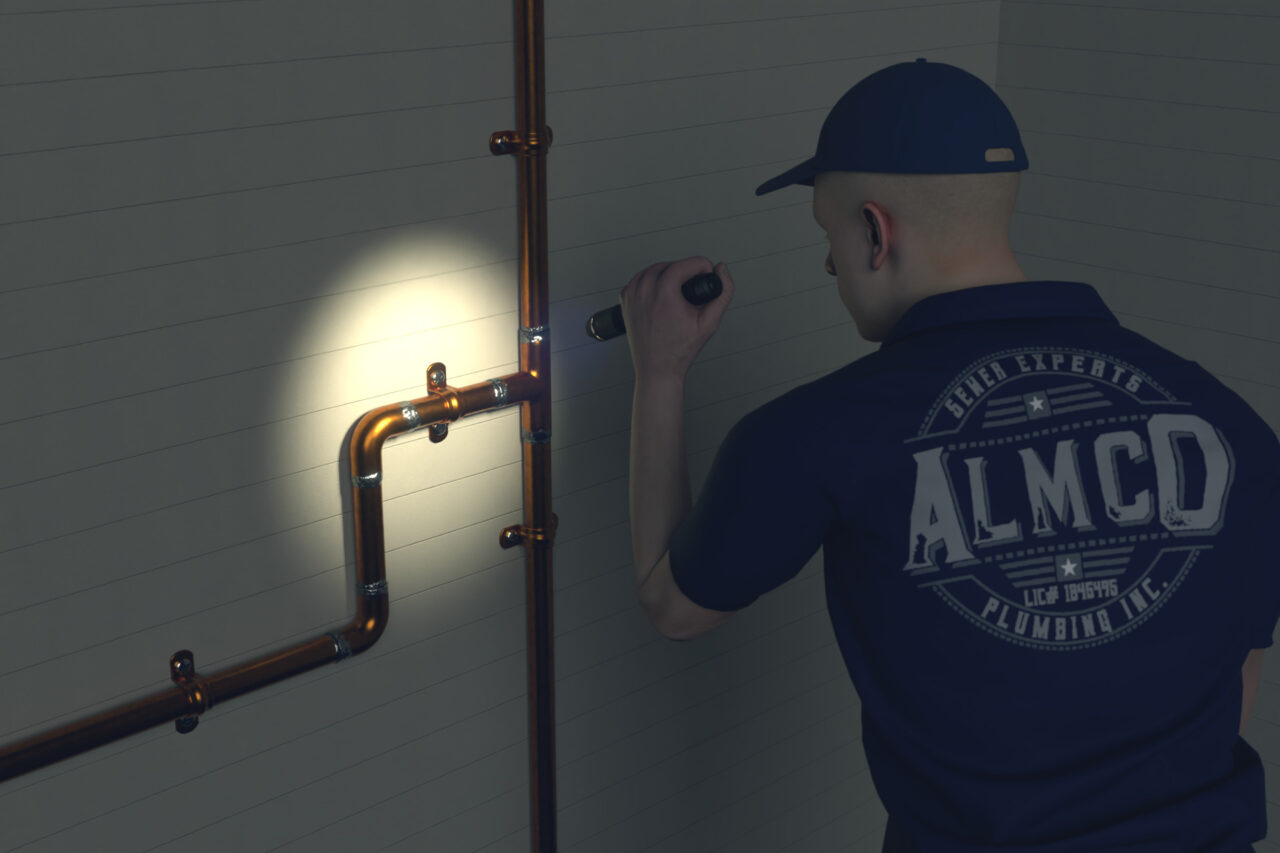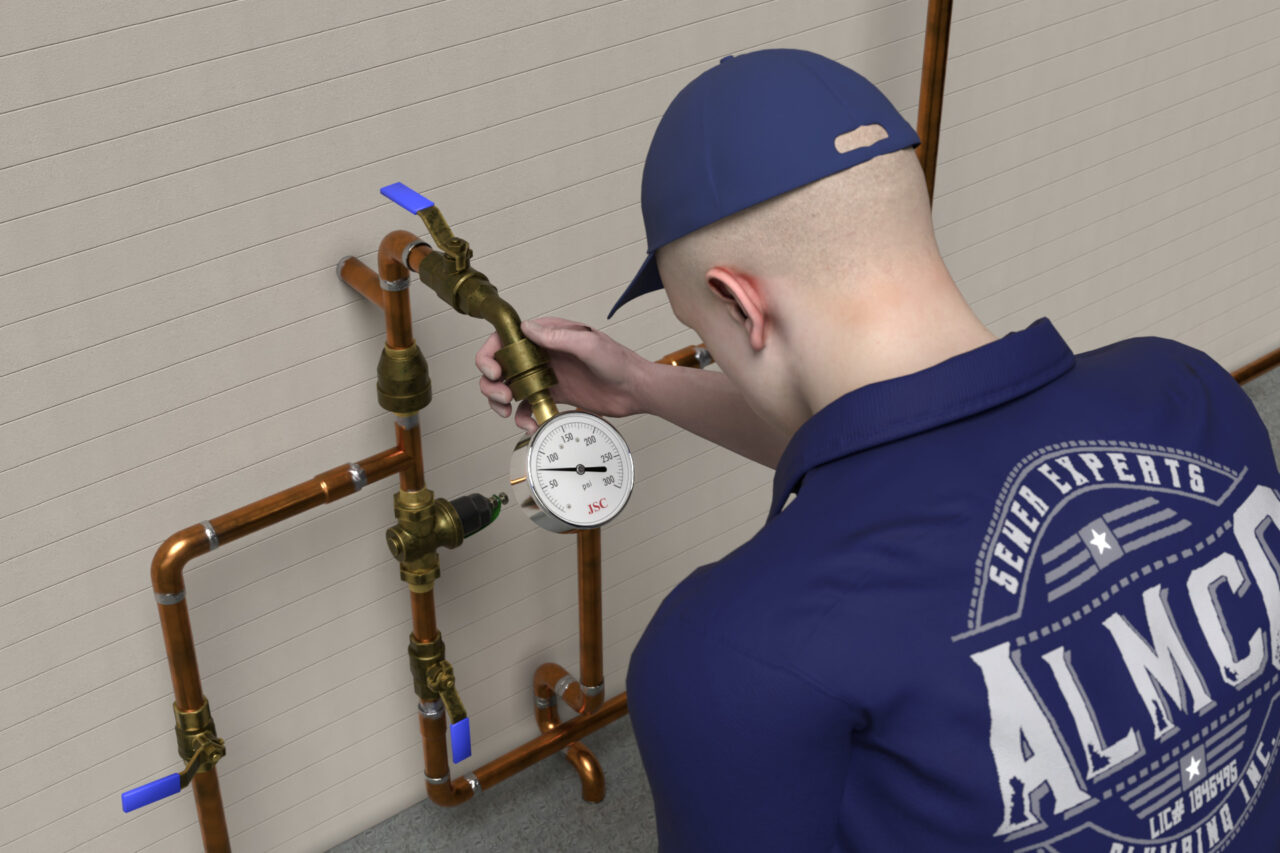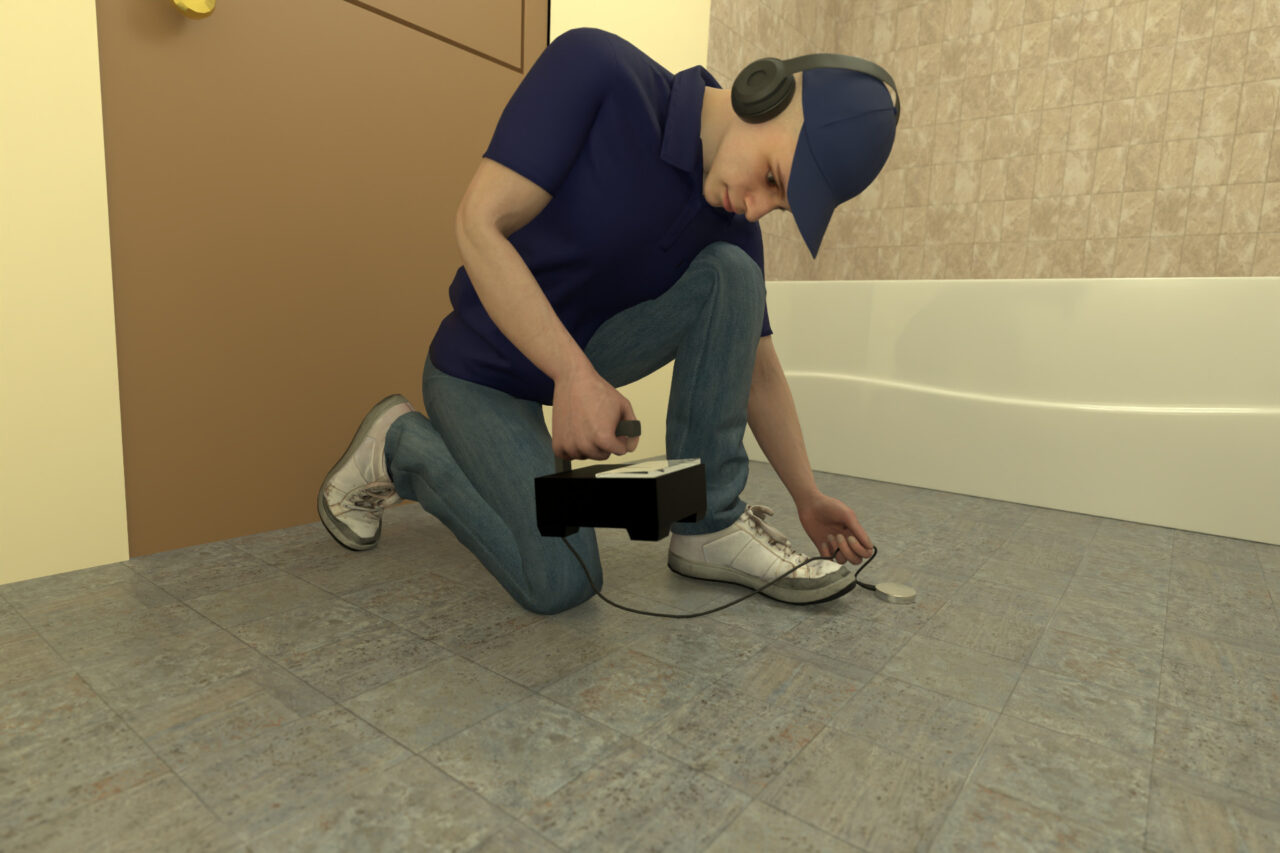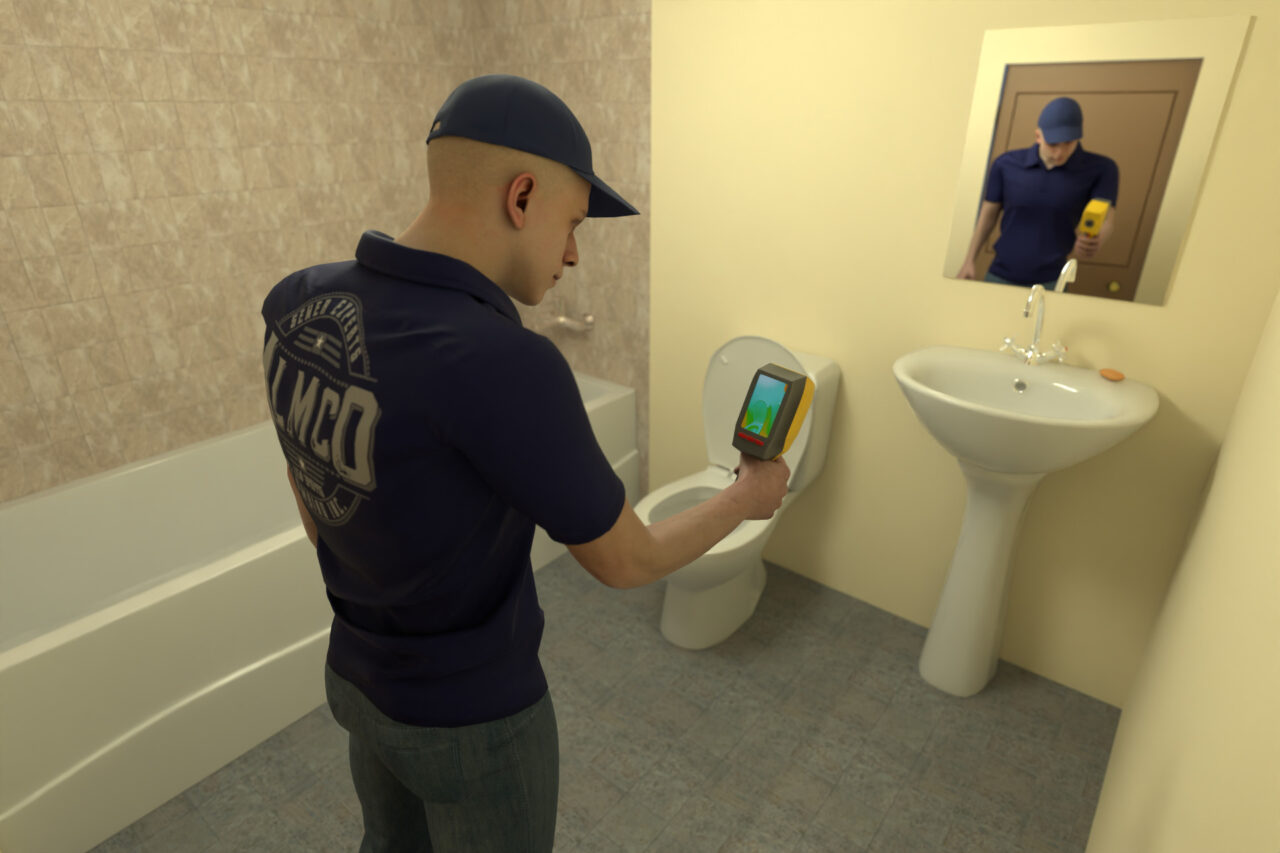Water Pipe Leak Detection in San Diego, CA: Methods, Step-by-Step Procedure, Pros & Cons, & Pricing
Plumbing leaks can be a homeowner’s nightmare, leading to costly repairs, structural damage, and high utility bills if not addressed promptly. Accurately diagnosing these leaks is critical to preventing further damage and ensuring the long-term health of your plumbing system. This article covers everything you need to know about diagnosing water pipe leaks in San Diego, including common causes, signs to look for, advanced detection methods, and the benefits of professional services.
What Causes Water Pipe Leaks?
Water pipe leaks in San Diego can be caused by several factors, some of which are influenced by the region’s unique conditions. Understanding these causes will help homeowners address potential problems early and effectively maintain their plumbing systems.
- Corrosion & Aging Pipes. In older neighborhoods, homes often have aging plumbing systems with materials such as galvanized steel or copper. Over time, these materials corrode, causing leaks. San Diego’s hard water can accelerate this process by depositing minerals inside the pipes.
- High Water Pressure. Municipal water supplies can occasionally fluctuate in pressure. Excessive water pressure can stress pipes, causing them to crack or burst. Installing a pressure regulator can alleviate this problem.
- Ground Shifting & Seismic Activity. Southern California, including San Diego, is prone to seismic activity. Even small earthquakes or natural ground shifts can stress or dislodge underground pipes, causing leaks.
- Poor Installation or Repairs. Many homes have had plumbing upgrades or repairs over the years. Substandard materials or improper installation practices can create weak spots in the system, leading to future leaks.
Understanding these root causes is key to proactive maintenance and a rapid response to problems.
Signs You Might Have a Water Pipe Leak
Water pipe leaks can develop silently, often going unnoticed until they cause significant damage. Recognizing the early signs is essential to preventing costly repairs and ensuring the safety of your home. Here are some common indicators that you may have a water pipe leak:
- Unexplained Increase in Water Bills. If your water usage has stayed the same, but your bill has spiked, it’s a strong indication of a hidden leak.
- Low Water Pressure. A sudden drop in water pressure could mean that water is escaping through a leak instead of reaching your fixtures.
- Damp or Discolored Walls, Floors, or Ceilings. Damp stains, peeling paint, or warped flooring could indicate a leak in your walls or under your floors.
- Mold or Mildew Growth. Persistent moisture from leaks creates the perfect environment for mold and mildew, often accompanied by a musty odor.
- Unusual Noises. Hearing water running when no fixtures are in use, or hissing and dripping sounds from hidden areas may indicate a leaky pipe.
- Warm Spots on the Floor. In homes with slab foundations, warm spots on the floor could indicate a hot water pipe leak below the surface.
- Puddles or Wet Spots in the Yard. Unexplained wet spots, even in dry weather, can indicate a leak in underground pipes. Lush, greener grass in certain areas can also be a sign.
- Cracks in Walls or Foundation. Prolonged leaks can weaken structural elements, leading to cracks in your home’s foundation or walls.
- Unpleasant Odors. Leaks that go unaddressed can lead to stagnant water, which can cause foul odors near the affected area.
If you suspect a leak, turn off all water fixtures in your home and check your water meter. If the meter continues to run, it likely confirms a hidden leak.
The next step is to call a plumbing company like Almco Plumbing, which uses advanced diagnostic tools and techniques to detect and repair water pipe leaks.
Methods for Diagnostics of Water Pipe Leaks
Accurate detection of water pipe leaks is essential to minimize damage and ensure efficient repairs. Each method is chosen based on the type of plumbing system, the suspected location of the leak, and the complexity of the problem. In San Diego, with its mix of modern and aging plumbing systems, advanced diagnostic tools play a critical role. Here are the most common techniques used to detect plumbing leaks.
Visual Inspection

Visual Inspection
Visual inspection is often the first and easiest step in diagnosing water pipe leaks. While it may seem basic compared to high-tech methods, it provides valuable clues about potential problems and helps prioritize further investigation.
Advantages
- Cost-Effective: Because it does not require specialized equipment, visual inspection is an affordable and non-invasive diagnostic method
- Quick Problem Identification: Experienced plumbers can identify obvious leaks or damage within minutes
Limitations
- Hidden Leaks May Go Undetected: Leaks behind walls, under floors, or underground often require more advanced techniques
Experienced plumbers perform a thorough visual inspection of pipes, fixtures, and surfaces. Signs such as wet spots, discoloration, or corrosion often indicate the source of the leak.
Pressure Testing

Pressure Testing
Pressure testing is a proven technique for identifying water pipe leaks, especially in systems where leaks may not be immediately visible. This method works by measuring the pressure within a plumbing system and identifying drops that signal the presence of a leak.
Advantages
- Highly Accurate: Can detect even the smallest leaks that might otherwise go unnoticed
- Early Detection: Identifies leaks in their early stages, preventing costly repairs and significant water damage
- Comprehensive Assessment: Evaluates the overall integrity of the plumbing system, not only locating leaks but also highlighting areas of potential future failure
Limitations
- Requires Specialized Equipment & Expertise: Improper handling of pressure testing equipment can result in damage to the plumbing system
- May Not Directly Locate the Leak: Confirms the presence of a leak, but may need to be combined with other methods, such as video inspection, to pinpoint the location
In San Diego, where water conservation is critical, pressure testing plays an important role in minimizing water loss and maintaining efficient plumbing systems.
Sonar Leak Detection

Sonar Leak Detection
Sonar leak detection technology uses advanced acoustic sensors to detect underground or hidden water and gas leaks. These devices detect sound waves generated by leaking water, allowing pinpointing leaks without digging or breaking through walls.
Advantages
- Non-Invasive: Detects leaks without breaking walls or floors
- Highly Accurate: Pinpoints leaks with precision, reducing unnecessary repairs
- Effective on A Variety of Materials: Works on metal and plastic pipes, even underground
Limitations
- Less Effective in Noisy Environments: Background noise can interfere with readings
- Limited for Low-Pressure Leaks: Very small or low-pressure leaks may be more difficult to detect
Sonar leak detection tools like Goldak are valuable for quick and accurate leak identification, but they work best when combined with expert analysis and professional plumbing solutions.
Infrared Thermal Imaging

Infrared Thermal Imaging
Infrared thermal imaging is a state-of-the-art method for diagnosing water pipe leaks. This technology uses thermal cameras to detect temperature differences caused by escaping hot water, helping to locate hidden leaks in walls, floors, and underground areas without digging or cutting.
Advantages
- Non-Destructive: Eliminates the need to tear up walls or floors, preserving the structure of the property
- Accurate & Efficient: Provides real-time, accurate identification of leak locations, minimizing guesswork
- Saves Time & Money: Faster detection reduces repair costs and water damage restoration expenses
- Environmentally Friendly: Helps conserve water by identifying leaks quickly and efficiently
Limitations
- Requires Expertise: Proper interpretation of infrared images is critical.
- Depends on Conditions: Environmental factors such as ambient temperature and humidity can affect the accuracy of thermal imaging.
- Initial Cost: The technology requires high-end equipment, which can increase the cost of diagnostic services.
While it can locate the source of the temperature change, additional methods may be required to confirm the presence of a leak.
DIY Leak Detection vs. Professional Diagnostics
While DIY techniques can be helpful for minor problems, professional diagnostics provide greater accuracy, especially for hidden or complex leaks.
DIY Leak Detection
DIY leak detection uses common techniques such as visual inspection, listening for sounds, or dye testing.
Advantages of DIY Leak Detection
- Low Cost: No professional service fees are required for simple checks
- Convenient: Homeowners can perform basic inspections at any time
- Immediate Action: Small leaks can sometimes be fixed quickly without waiting for a technician
Limitations of DIY Detection
- These methods are less effective at detecting leaks behind walls, under floors, or in underground pipes
- Misidentifying the source of the problem can result in wasted time and effort
- Attempting repairs without proper knowledge can exacerbate the problem
Professional Diagnostics
Professional diagnostics involve advanced techniques: pressure testing (for new construction), infrared thermal imaging, acoustic leak detection, and others.
Advantages of Professional Diagnostics
- High Accuracy: Pinpoints the exact location of leaks, reducing guesswork
- Comprehensive Coverage: Detects leaks in areas inaccessible to DIY methods, such as underground or slab leaks
- Time-Saving: Professionals use specialized tools to diagnose problems faster and more effectively
Limitations of Professional Diagnostics
- Professional services can be more expensive than DIY efforts
- Requires contacting and coordinating with a plumbing contractor
So which is better: DIY or professional detection?
DIY leak detection is best for:
- Visible or minor leaks, such as dripping faucets or running toilets.
- Situations where homeowners want to quickly confirm a suspected leak.
Professional diagnosis is essential for:
- Hidden leaks in walls, floors, or underground pipes.
- Ongoing water damage with no obvious source.
- Plumbing systems in older homes or apartment buildings.
- Preventive maintenance to avoid costly repairs in the future.
At Almco Plumbing, we provide leak detection services tailored to San Diego’s unique infrastructure, using advanced tools such as CCTV camera inspections and other methods.
Professional Water Leak Diagnostics Step-by-Step
To prevent further damage and ensure proper repairs, accurate and efficient leak detection is critical. Professional leak identification requires advanced tools and a systematic procedure. Here’s what you can expect in this process.
Step 1. Visual Inspection
The plumbing technician will conduct a thorough inspection of the property, looking for visible signs of a leak, such as:
- Water stains on walls or ceilings
- Mold or mildew growth
- Wet or overly lush areas in the yard that could indicate underground leaks
Step 2. Water Meter Test
To confirm the presence of a leak, the plumber performs a water meter test:
- The water supply is shut off, and the meter is monitored for any movement
- Movement in the meter reading indicates that water is escaping from the system, confirming the presence of a hidden leak
Step 3. Advanced Leak Detection Tools
If a leak is confirmed but not visible, the specialist uses specialized tools to locate the source, such as:
- Acoustic leak detection
- Pressure testing
- Thermal imaging
- For toilets, drains, or smaller leaks, technicians may also use dye testing
Step 4. Repair Plan & Estimate
The technician will discuss repair options based on the severity and location of the leak. A detailed cost estimate is provided to ensure the homeowner understands the next steps.
Our company combines state-of-the-art technology with decades of experience to provide reliable water leak diagnostics services in San Diego.
Almco Plumbing’s Pricing for Leak Detection Services
Almco Plumbing offers accurate and affordable pipe leak detection services tailored to the needs of San Diego residents. Our pricing is designed to fit a range of budgets while maintaining consistent quality. Below is a breakdown of the company’s rates and services.
| Type of Work | Average Price, $* |
|---|
| Leak Detection Inside the Wall | $375–$600 |
| Slab Leak Detection | $375–$850 |
| Front Yard Water Main Leak Detection | $250–$450 |
| Irrigation Water Leak Detection | $175–$1,200 |
*The above prices are for guidance only and do not constitute an offer.
Frequently Asked Questions (FAQ)
What are the common signs of a water pipe leak?
Common signs include unexplained increases in your water bill, wet or damp spots on floors or walls, mold growth, reduced water pressure, and the sound of running water when no faucets are on.
How accurate is professional leak detection?
Professional leak detection methods are highly accurate and can pinpoint the exact location of leaks without causing unnecessary damage to your property.
Can I detect leaks myself before calling a professional?
While DIY methods, such as checking for water meter changes or visually inspecting for signs of leaks, can be helpful, they often miss hidden leaks. Professional diagnostics are recommended for precise results.
How much does water leak detection cost near San Diego?
The cost varies based on the method used and the complexity of the job, but generally falls between $375 and $600. Almco Plumbing offers transparent pricing, with services starting at competitive rates. Contact us for a detailed estimate.
Is pipe leak detection covered by insurance?
In many cases, leak detection services are covered by homeowners’ insurance if the leak causes damage. Check your policy or consult with your insurance provider for specific details.
How long does the water pipe leak detection process take?
The duration depends on the size of the property and the complexity of the issue. Most inspections are completed within a few hours.



